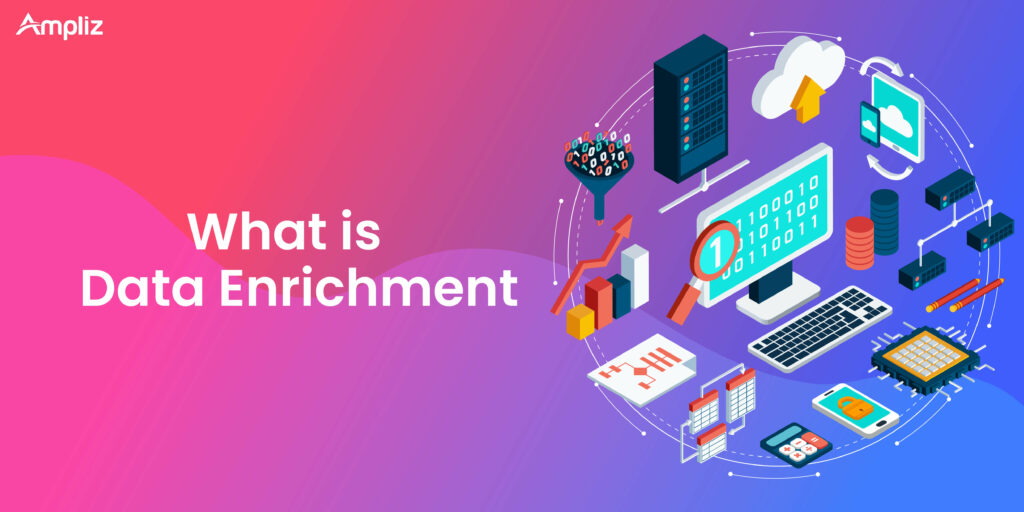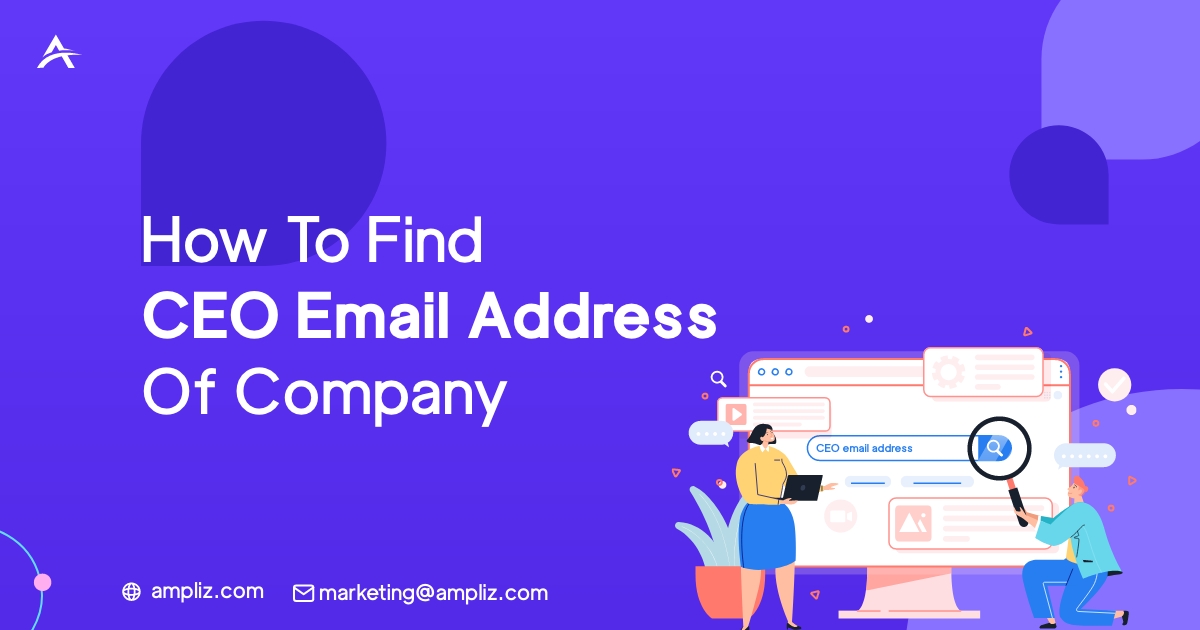In the B2B domain, data enrichment is one of the important elements of data hygiene. Data is considered to be the livelihood of the modern-day businesses and formulating customer service, marketing, and sales strategies is not possible without data. Business leaders across the world use data to power their decision-making process and lead to the growth and profitability of their companies.
Keeping aside speculations, business leaders make informed decisions based on facts and trends related to data. Many business leaders also make use of data wrangling, which is the process of transforming and mapping data for better use such as analytics. This process further helps the decision-making process by cleaning and structuring the existing data, and its importance has been widely acknowledged. Data enrichment is one of the steps in the process of data wrangling and let’s have an in-depth look at it.
What is Data Enrichment?
Data enrichment is the process of merging an available database of first-party client data with a third-party database taken from an external reliable source. An organization can make use of the enriched data which will be very useful and offer a lot of insights.
Data enrichment has already been used by several leading brands to make informed decisions by enriching their raw data. For businesses, their raw customer data includes website traffic, email lists, social media analytics, etc. This data in its raw form will be largely useless. If it is cleaned, structured and mixed with external authoritative data, it can become useful and offer a lot of insights. The overall process makes the raw data more relevant by giving it a valuable shape.
Brands can understand their customers better by understanding their life patterns through deeper insights. Data enrichment can be done in several ways. One of the most common techniques is by combining internal sales data with the external advertisement data to understand the relevancy and effectiveness of advertisements.
2 Common Types of Data Enrichment
Geographic data enrichment
This process makes use of latitudinal and longitudinal data or the postal data that is combined with the available dataset like the customer addresses. There are many businesses that provide this data which includes the mapping insights, geographic boundaries between cities and towns, ZIP codes, etc. This data enrichment is useful for businesses as it gives them data that is geographically-enriched which will help them in their expansion plans. They can also use this data to target customers within specific geography by leveraging the insights from the data.
Demographic data enrichment
In the demographic data enrichment process, businesses make use of demographic data like income level and marital status that is mixed with the data of existing customers. There can be multiple sources to collect this data and the subsets are also many. There can also be elements like housing data in terms of value, assets owned, number of kids, etc. It can be used by varied businesses to make a targeted approach. Credit-lending firms can use the credit ratings of a person before making credit card offers to customers.
Benefits of data enrichment
- Cost savings
Data enrichment helps businesses save money because the information that is not considered useful is not stored. Rather, the existing data is enriched after combining it with the external authoritative data. There would be no spending on databases and that money can be used in other activities. - Meaningful relationships
When the existing data is enriched with external data, it leads to personalized communications which are very vital. It will further increase the scope of meaningful customer relationships and business opportunities. Developing channels and strategies of communication that will meet the customer needs will become a lot easier with the relevant customer data. Customers are more likely to relate to the brands that meet their personal tastes and preferences. - Customer segmentation
Data enrichment leads to the possibility of identifying segments of target customers and designing personalized communication for them. Targeted communication gives value-driven information that will most likely lead to increased sales and customer loyalty. - Targeted marketing
If businesses want to be successful now and in the future, they must resort to targeted marketing. One-size-fits-all marketing approach no longer works, especially in this age of increased competition. Data enrichment helps segment the data effectively which is vital for the success of targeted marketing. - Improved sales
Data enrichment gives effective information regarding that can help businesses improve their sales efficiency and their return on investments (ROI). There is a further chance for upselling and cross-selling as the business would already have the right data and knowledge of customers. If a business invests a huge amount into a contact list to turn that into prospects and subsequent customers, but it could also happen that the data has become outdated. Businesses cannot afford such losses. - Eliminate irrelevant data
Irrelevant and redundant data can cost a business drastically and lead to customer loss, revenue loss and bring a bad reputation. Redundant data is very common for businesses because they are not sure of what data to store and what to delete. Another problematic element is the duplicated data which is very common in raw data and affects the overall data quality. Data enrichment helps to eliminate duplicate data and improves data quality. - Improves customer experience
As we move deep into data enrichment, it is also important to understand what data cleansing means as there are many who get confused between the two.
Data cleansing vs. Data Enrichment
The process of data cleansing or data cleaning involves making the data consistent, correct and trustworthy. It is basically filtering a large amount of available data to identify quality and usable insights about the motivations and behaviors of customers. The major difference between data enrichment and data cleansing is that the latter involves solving inconsistencies and updating or deleting old or incorrect data. Meanwhile, data enrichment, as already seen above, is supplementing one dataset with data from other credible sources.
For example, if you want to start a data project, you can start by cleaning the existing data to remove all the irrelevant information. You might further want to add some credible data by using third-party data. Data cleansing will help you to identify duplicate, corrupt or inaccurate records from your customer database. It can be very time-consuming if the process is not automated.
Why is data enrichment important as a long-term process?
Data enrichment is a very important aspect of data management and it’s something that you need to do on a continuous basis. The data of customers doesn’t present the complete picture no matter how many details it gives. The marital status may change, income levels can change, physical addresses can change and so to the possession of assets. Names of women are also subject to change when they get married. Due to all these factors, the process of data enrichment becomes very important and must be done on a continuous basis. Else, there is a lot of scope of having outdated information which could lead to your customers receiving irrelevant offers since the data would be old and outdated.
It can take a lot of effort to keep the databases updated, especially when the data size is big. Thus, it’s no surprise that most of the businesses do not spend their time cleaning the data and using it. Due to the commitment of time required for it, it becomes very important to automate the process as far as possible. To help this process, machine learning algorithms can be of vital help as they can streamline the process and match and merge the data at a much faster rate as compared to humans. This will help the data enrichment process run at any time and help businesses keep their data updated at all times.
This will ultimately lead to better personalization, targeted marketing, improved sales, and brand loyalty. Data enrichment can be ideal for the success of a business. Whether it is geography-based or demography-based targeting, businesses can accurately target customers through the best offers and deals. Better results can be expected if businesses can accurately target the leads. It will further lead to the creation of additional data that can be used by businesses to work with the most recent data.
Final thoughts
No matter what the business is, the sales teams are finding their work becoming incredibly data-driven. It is not difficult to get the data that is required to improve the sales output. The key here is to ensure that you have access to the right information at the right time. To bridge this gap, data enrichment comes into play.



